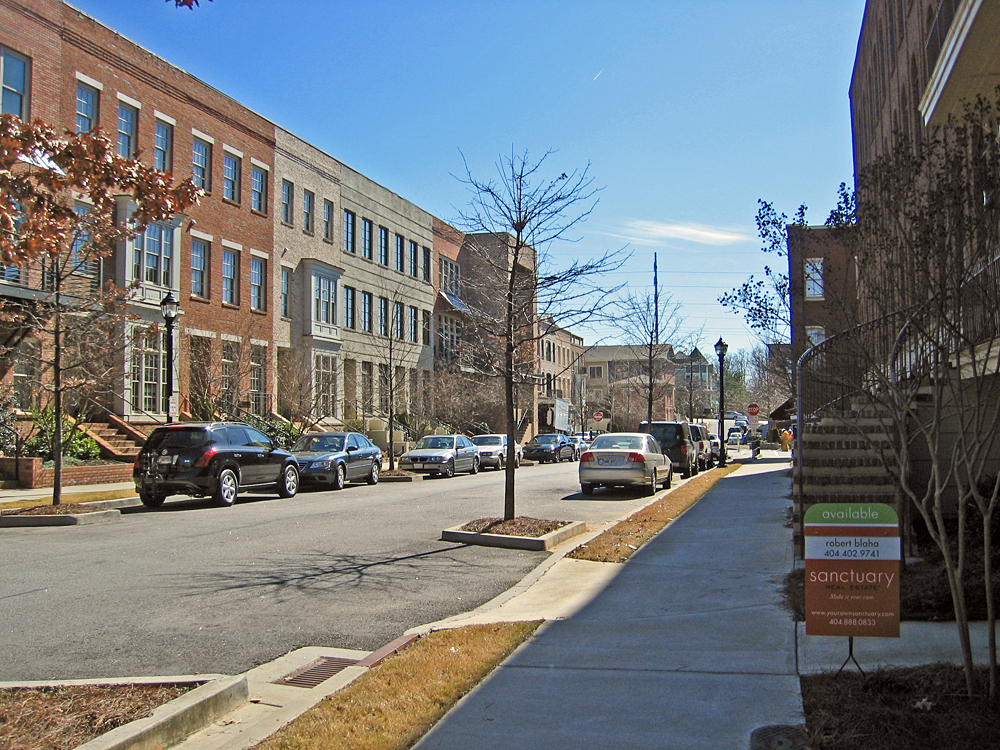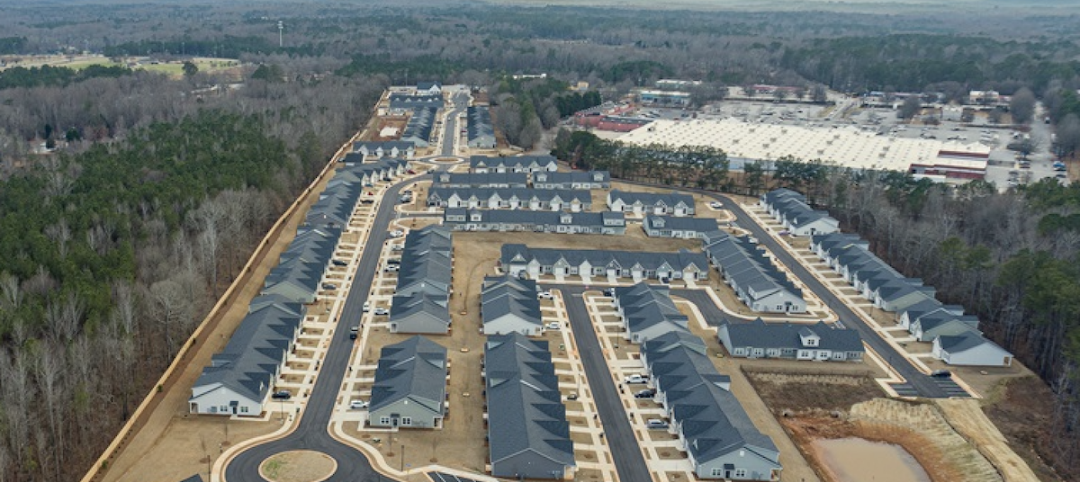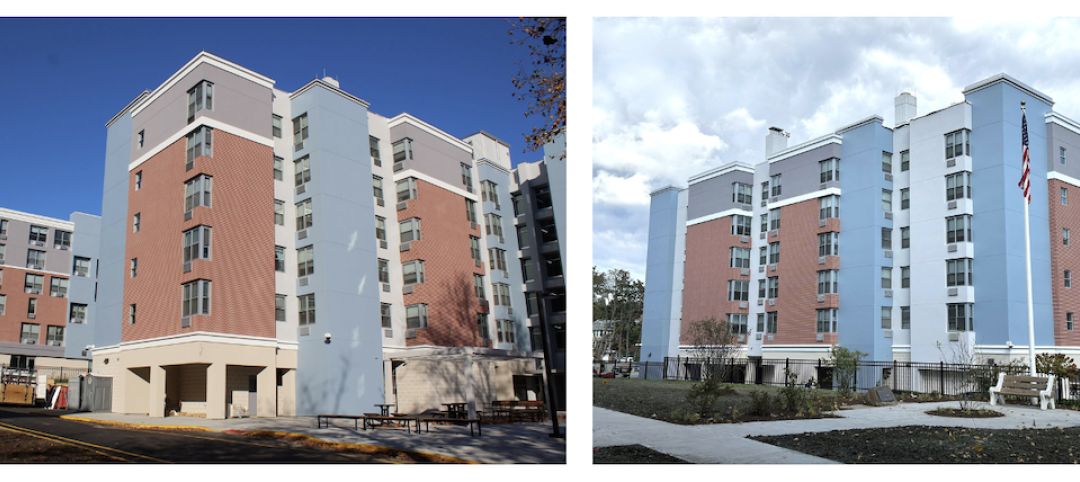Developers of multifamily apartment buildings remain mostly positive about their markets’ current conditions, according to the latest quarterly tracking data that the National Association of Home Builders released on February 26.
NAHB’s Multifamily Production Index (MPI), based on responses from 93 developers across the country, stood at 54, on a scale of 0 to 100, in the fourth quarter of 2014. The Index—a composite measure of developer sentiments about construction for low-rent units, market-rate rentals, and for-sale condos—registered above 50 for each quarter last year, and has been hovering at 50 or higher since the first quarter of 2013.
The latest reading “is in line with our view that the multifamily segment of the industry has largely recovered from the downturn,” said NAHB Chief Economist David Crowe. “After increasing steadily over the past several years, multifamily production has now reached a healthy, sustainable level.”
Developers’ attitudes are also reflected in their willingness to take on future projects. In January, permits issued for buildings with five or more units rose by 13.8% to an annualized rate of 372,000, according to the Census Bureau.
A closer look at the numbers finds that developers’ sentiments about current conditions for market-rate starts, at an index of 62, were more robust than their sentiments for either low-rent starts (52) or for-sale condo starts (50).
NAHB’s Vacancy Index, which measures the industry’s perception about apartment vacancies, stood at 39 in the fourth quarter of 2014, compared to 38 for the same quarter a year earlier. (The lower the index, the fewer the perceived vacancies.) Interestingly, developers perceived lower vacancies for Class B apartments compared to either Class A or C apartments.
Developers’ attitudes are also reflected in their willingness to take on future projects. In January, permits issued for buildings with five or more units rose by 13.8% to an annualized rate of 372,000, according to preliminary estimates released by the Census Bureau on February 18.
Multifamily starts in January were up 24.5% over the same month a year earlier to an annualized rate of 381,000 units. In 2015, NAHB expects multifamily starts ultimately to increase modestly to around 358,000. “Because of strong job growth, we expect to be able to keep building for the foreseeable future,” said W. Dean Henry, CEO of Legacy Partners Residential in Foster City, Calif., and chairman of NAHB’s Multifamily Leadership Board.
Financing projects should not be an issue, as more lenders are jumping into this sector. Banks and Commercial Mortgage-Backed Securities lenders increased their market share of lending for multifamily projects through 2014, and are expected to be even bigger players this year, as Fannie Mae and Freddie Mac pull back. “Capital is plentiful and many lenders are expanding their target markets for investments,” observed Faron Thompson, head of Jones Lang LaSalle’s multifamily debt finance team.
It’s worth noting, though, that Fannie and Freddie expect demand for multifamily housing to soften a bit over the next two years, and for most of the growth to occur in a limited number of metro markets.
Related Stories
Standards | Apr 1, 2024
New technical bulletin covers window opening control devices
A new technical bulletin clarifies the definition of a window opening control device (WOCD) to promote greater understanding of the role of WOCDs and provide an understanding of a WOCD’s function.
Adaptive Reuse | Mar 26, 2024
Adaptive Reuse Scorecard released to help developers assess project viability
Lamar Johnson Collaborative announced the debut of the firm’s Adaptive Reuse Scorecard, a proprietary methodology to quickly analyze the viability of converting buildings to other uses.
Green | Mar 25, 2024
Zero-carbon multifamily development designed for transactive energy
Living EmPower House, which is set to be the first zero-carbon, replicable, and equitable multifamily development designed for transactive energy, recently was awarded a $9 million Next EPIC Grant Construction Loan from the State of California.
Adaptive Reuse | Mar 21, 2024
Massachusetts launches program to spur office-to-residential conversions statewide
Massachusetts Gov. Maura Healey recently launched a program to help cities across the state identify underused office buildings that are best suited for residential conversions.
Multifamily Housing | Mar 19, 2024
Jim Chapman Construction Group completes its second college town BTR community
JCCG's 200-unit Cottages at Lexington, in Athens, Ga., is fully leased.
Multifamily Housing | Mar 19, 2024
Two senior housing properties renovated with 608 replacement windows
Renovation of the two properties, with 200 apartments for seniors, was financed through a special public/private arrangement.
MFPRO+ New Projects | Mar 18, 2024
Luxury apartments in New York restore and renovate a century-old residential building
COOKFOX Architects has completed a luxury apartment building at 378 West End Avenue in New York City. The project restored and renovated the original residence built in 1915, while extending a new structure east on West 78th Street.
Multifamily Housing | Mar 18, 2024
YWCA building in Boston’s Back Bay converted into 210 affordable rental apartments
Renovation of YWCA at 140 Clarendon Street will serve 111 previously unhoused families and individuals.
Adaptive Reuse | Mar 15, 2024
San Francisco voters approve tax break for office-to-residential conversions
San Francisco voters recently approved a ballot measure to offer tax breaks to developers who convert commercial buildings to residential use. The tax break applies to conversions of up to 5 million sf of commercial space through 2030.

















